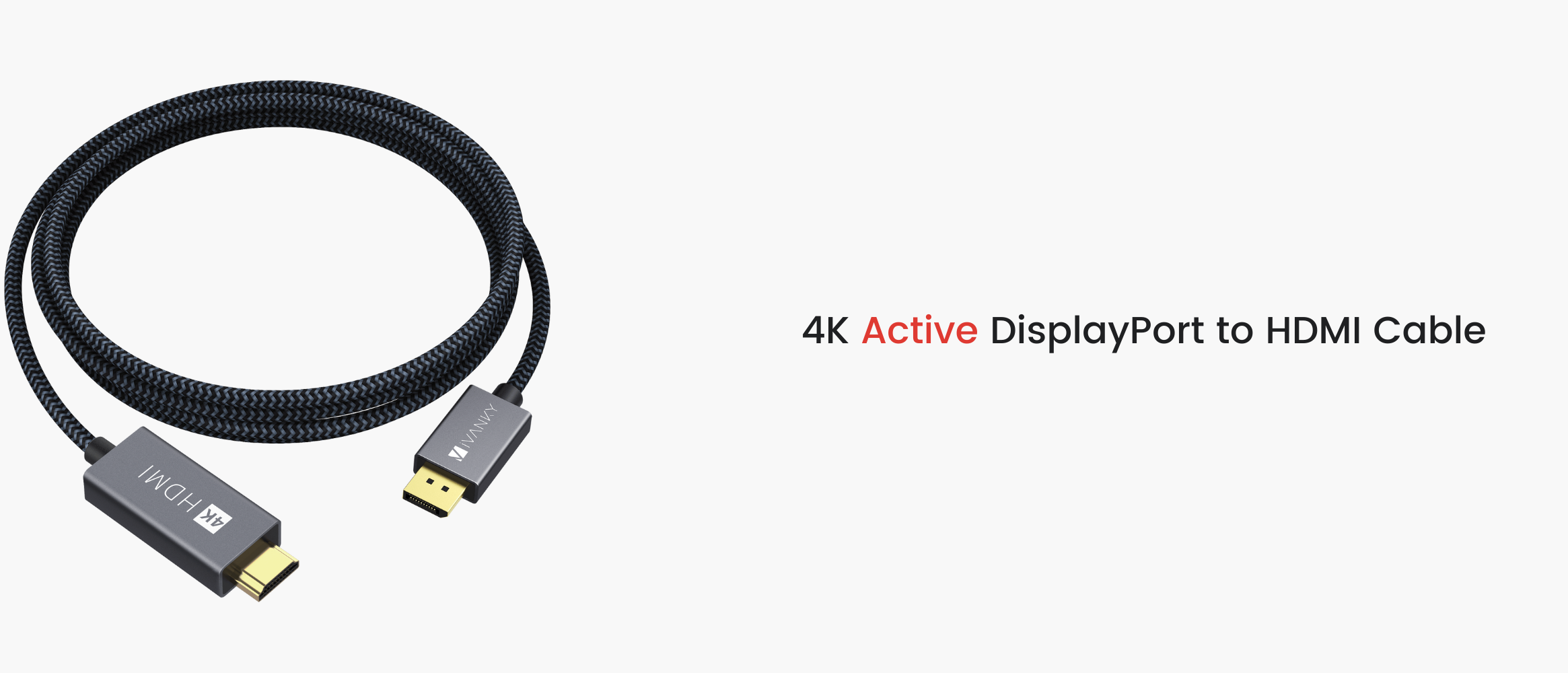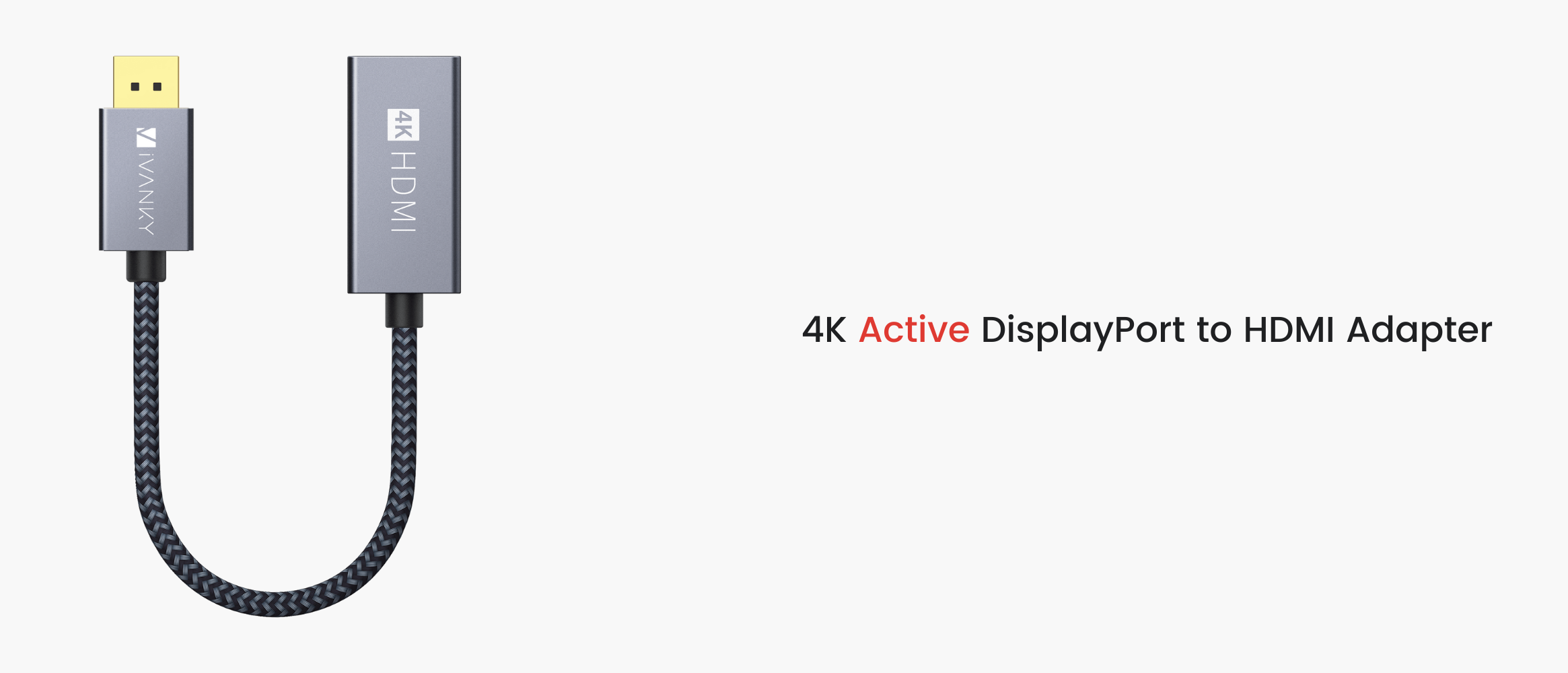DisplayPort to HDMI: Do I Need an Active DisplayPort Cable?
When choosing DisplayPort-related products on Amazon, you can view these bullet points as follows: "Active DisplayPort to HDMI Cable"? Active? So there’d be inactive, clumsy or dull cables to sell?

Well, there's no inactive, clumsy or dull cable, but rather a PASSIVE cable. So what's an active cable and a passive cable? How do I know if I need an active DisplayPort cable or a passive one? How do I choose one that really fits my needs?
Before we go further into the actual content of this article, we will discuss extensively what an active DisplayPort cable is and what a passive DisplayPort cable is. Then, after our in-depth analysis, we will give you our final verdict and help you to determine which one is right for you.
What Makes it Active or Passive?
Generally, we'd say it's because of the presence of a semiconductor chip. There are two types of chips, for better understanding, you can call them active chips and passive chips. A DisplayPort cable can be simply divided into the following situations:

Obviously, there's the option of not having to use a chip. Why do we need that extra chip? Is it a gimmick made up by your unscrupulous manufacturers who want to make more money?!
Why do we need it to be Active? Or What’s the advantages of active chip?
Of course not. It needs to be clear that ACTIVE is a concept that only appeared after the advent of 4K. Compared with the previous generation of 1080p, the performance required to achieve 4K resolution has been improved many times over.
If a copper cable is to achieve 4K@60hz video transmission, the quality of the cable should be higher and the length should be limited. The physical characteristics of the copper cables are destined to lose signals during transmission, and intelligence experts need to find a way to make up for the losses.

Your physics classmates will tell you that you can increase copper cables' performance by making them thicker. At the same length, the copper cable can transmit more signals, which is a good thing. Even if there is a signal loss during the transmission process, the signal that is successfully transmitted at the end can still meet the requirements for achieving 4K resolution.
Indeed, that's exactly right, ten points to Gryffindor. However: the copper cable would be too thick to bend and store. Also, it might be too heavy when plugging into the displays. Does that sound bad?
That's where the active chip comes into play. This small semiconductor chip can easily help amplify a signal. The signal is also lost during transmission (after all, the physical characteristics of copper cables cannot be eliminated), but by amplifying the remaining signal, it can also meet the needs of users.

Having said that, we introduced a key function of the active chip, the signal amplification function for signal attenuation in long-distance situations.
In fact, the chip has another basic function, the signal conversion function.
There are a number of different interfaces that exist in the world, such as DisplayPort, HDMI, DVI, etc. Simply understood, different interfaces can mean different transmission methods, such as land transportation or sea transportation. You need to switch from vehicle to vehicle on both channels. In the same way, if we want to switch from DisplayPort to HDMI, we need that conversion function.

To summarize, why do we need an active chip?
- We want it to amplify the signal.
- We hope it can converse the signal.
When to choose an active cable?
Although we've praised the active DisplayPort cables for so long, that doesn't mean that the active is better than the passive. We can only say that under what circumstances, the active has an advantage over the passive.
For example, active DisplayPort cables can help with more complex usage scenarios, such as home theater, where 4k@60Hz video transmission is a must, and normally requires a longer cable for complex setups.

So how do you choose active or passive cables? It all depends on your personal needs. Check out the list below:
- Do you need the final resolution and refresh rate to be at least 4K@60Hz?
- Do you need a looooong cable? (home theater, office meeting room layout, mall layout, etc.)
- Do you need to connect two different interfaces (normally speaking)?
If you say yes to one or two questions, go ahead and choose active DisplayPort cables!
Of course, we're not cunning businessmen. For iVANKY products, there's a little bit of a price difference between active and passive:
- Optical fiber or active copper cable over 10m is going to cost you more money.
- For products within 10m, the price difference between active and passive is not large.
Do I need an active DisplayPort cable or an active DisplayPort adapter?
With the previous explanation, you now understand the difference between the active and the passive. But should you choose a cable or an adapter?
Let’s take the iVANKY DisplayPort to HDMI cable/adapter as an example. The biggest difference between these two is the morphological difference on the HDMI end.
If you already have an HDMI cable, then you can choose the active adapter, and no matter how long your HDMI cable is, you can achieve signal enhancement, which is really great, right?
If you don't have an HDMI cable in your home, it's still recommended to use the active DisplayPort cables instead.


